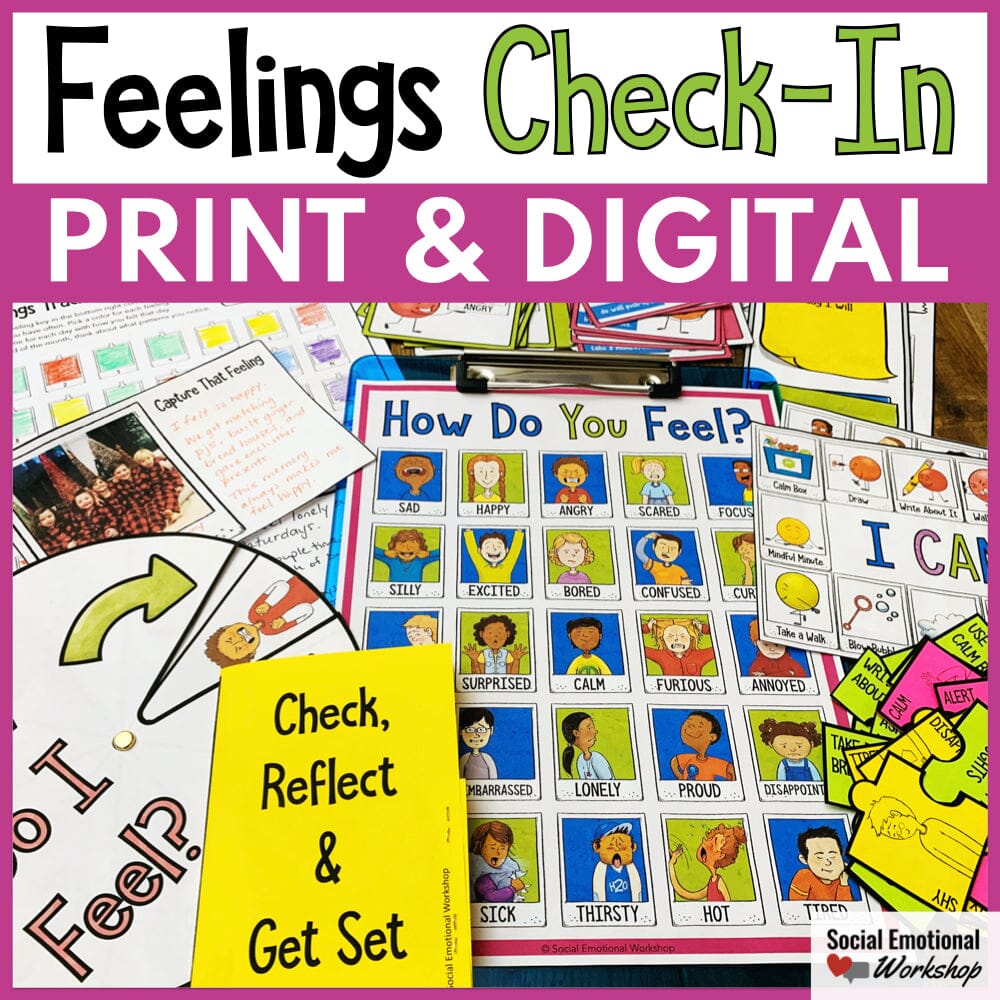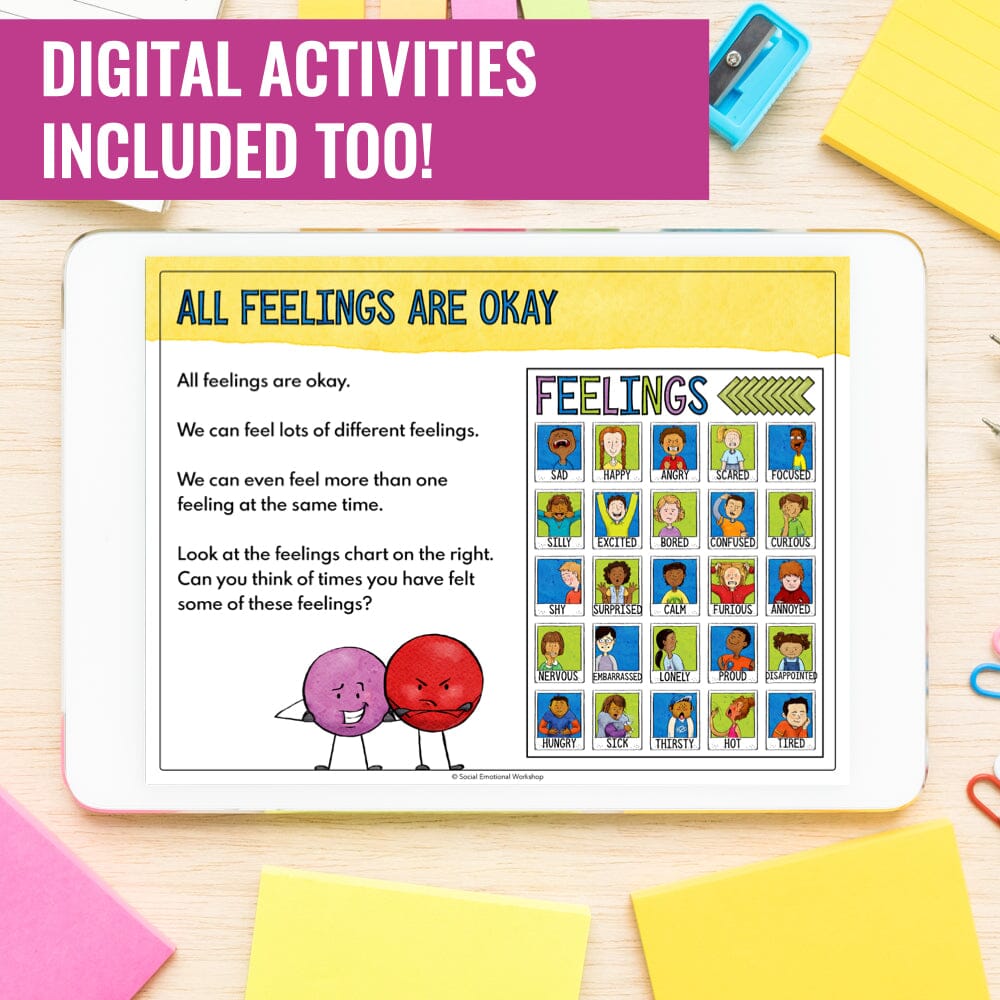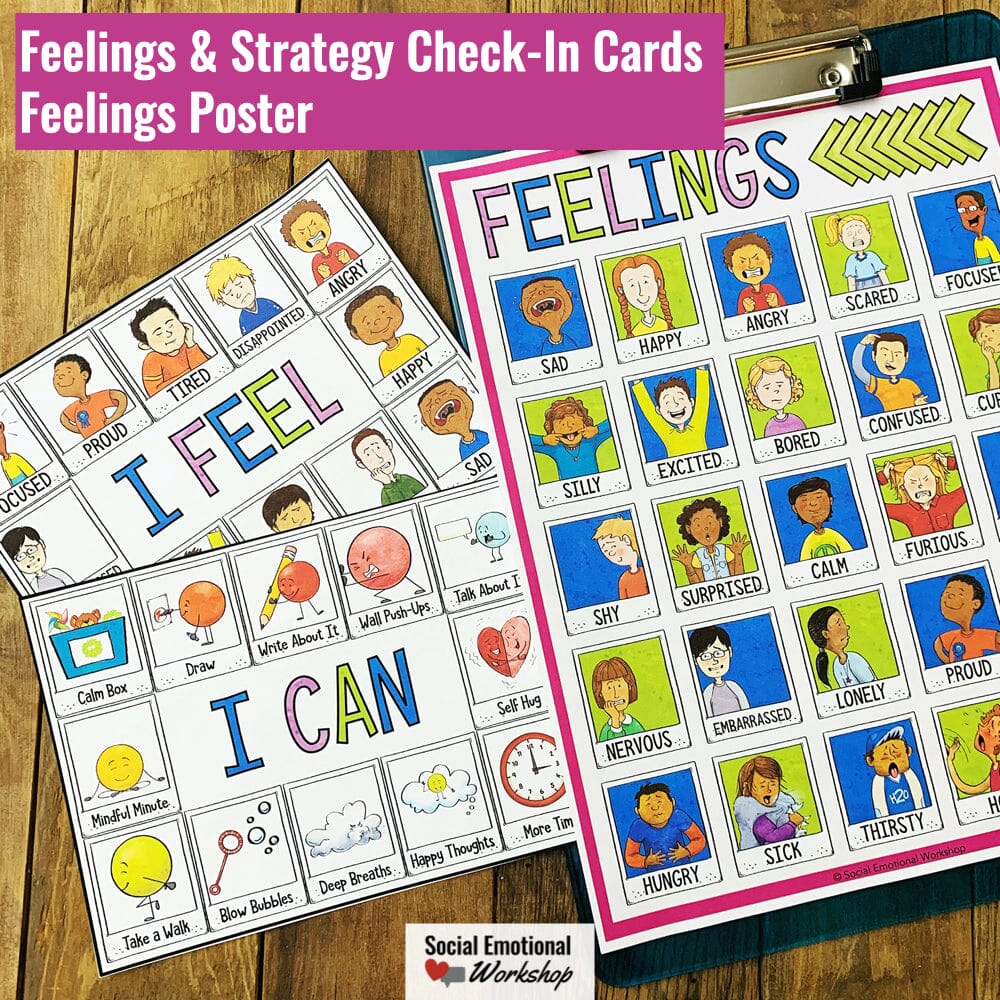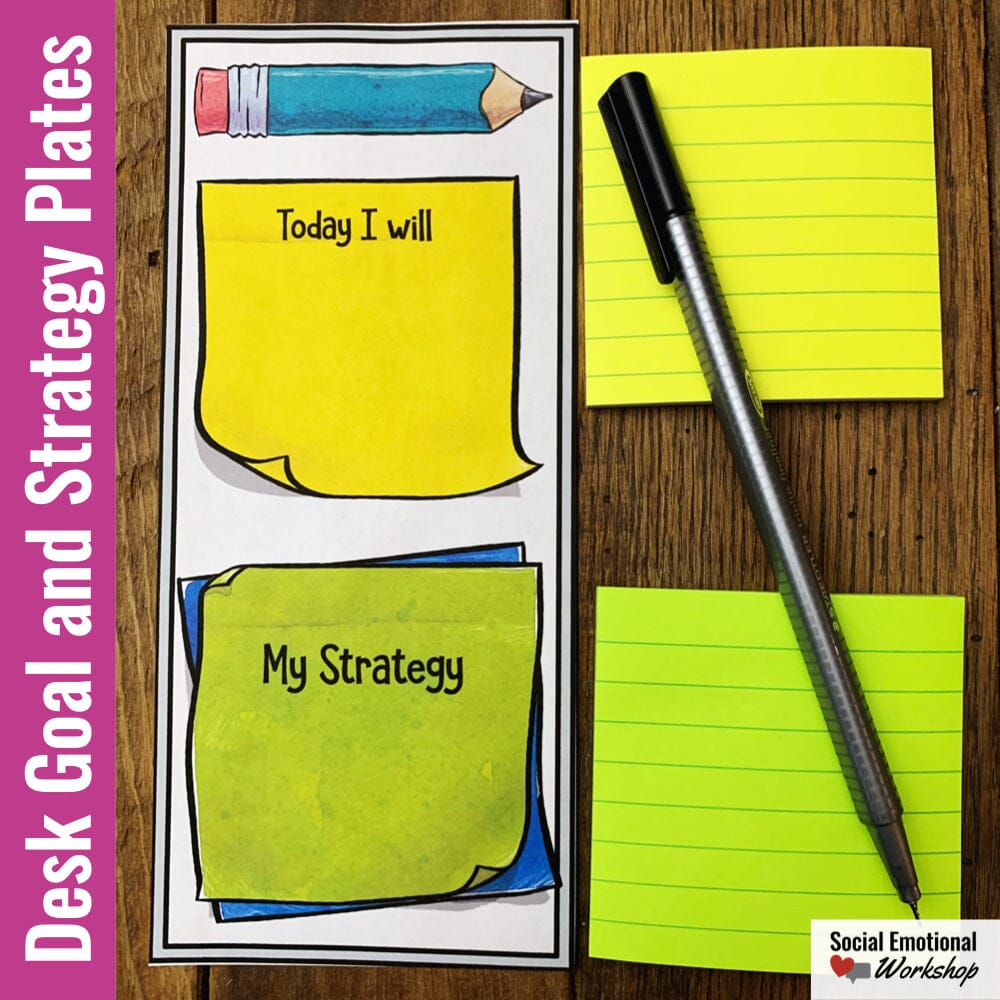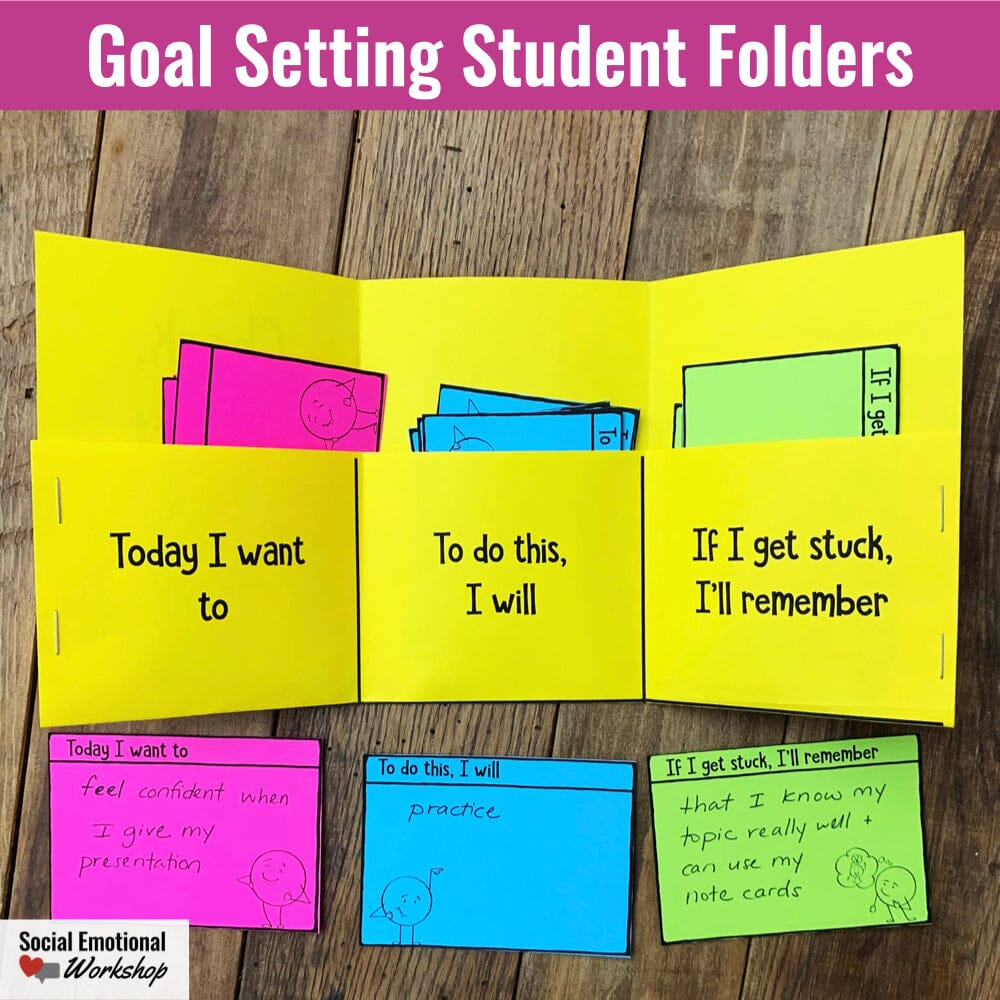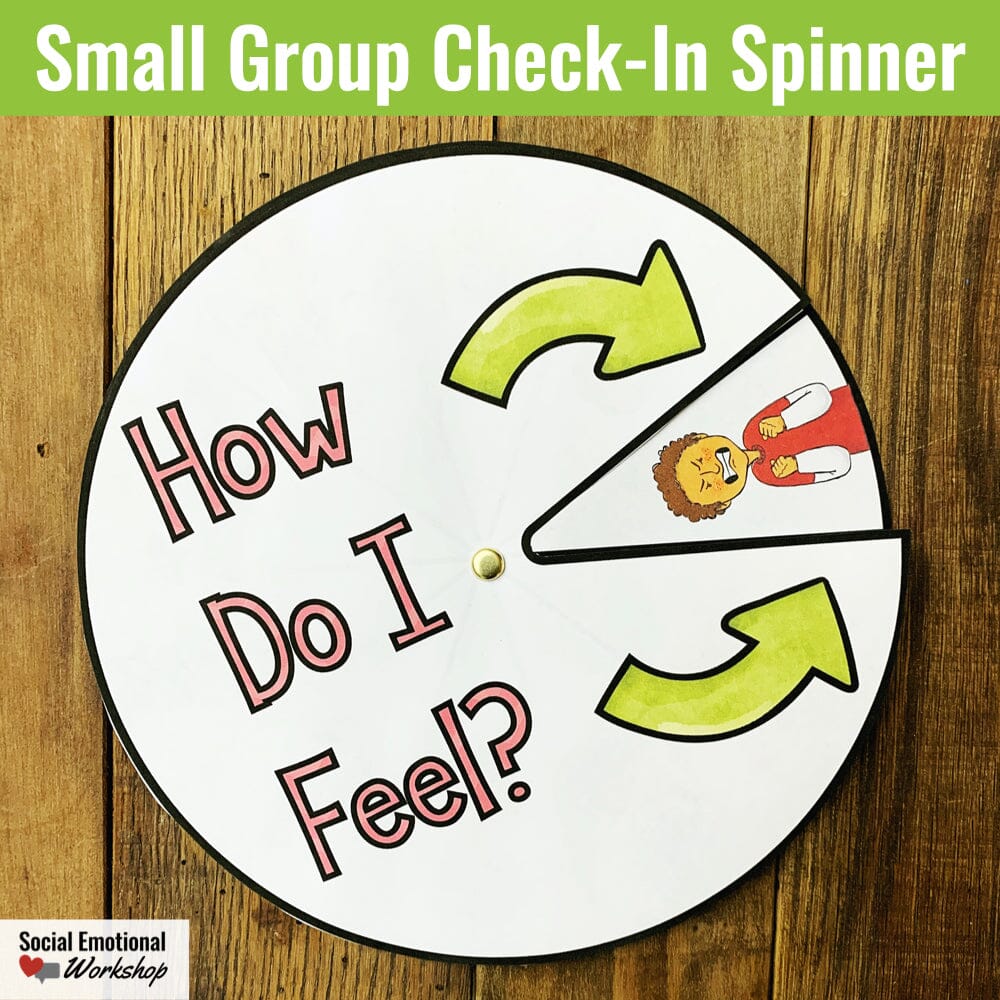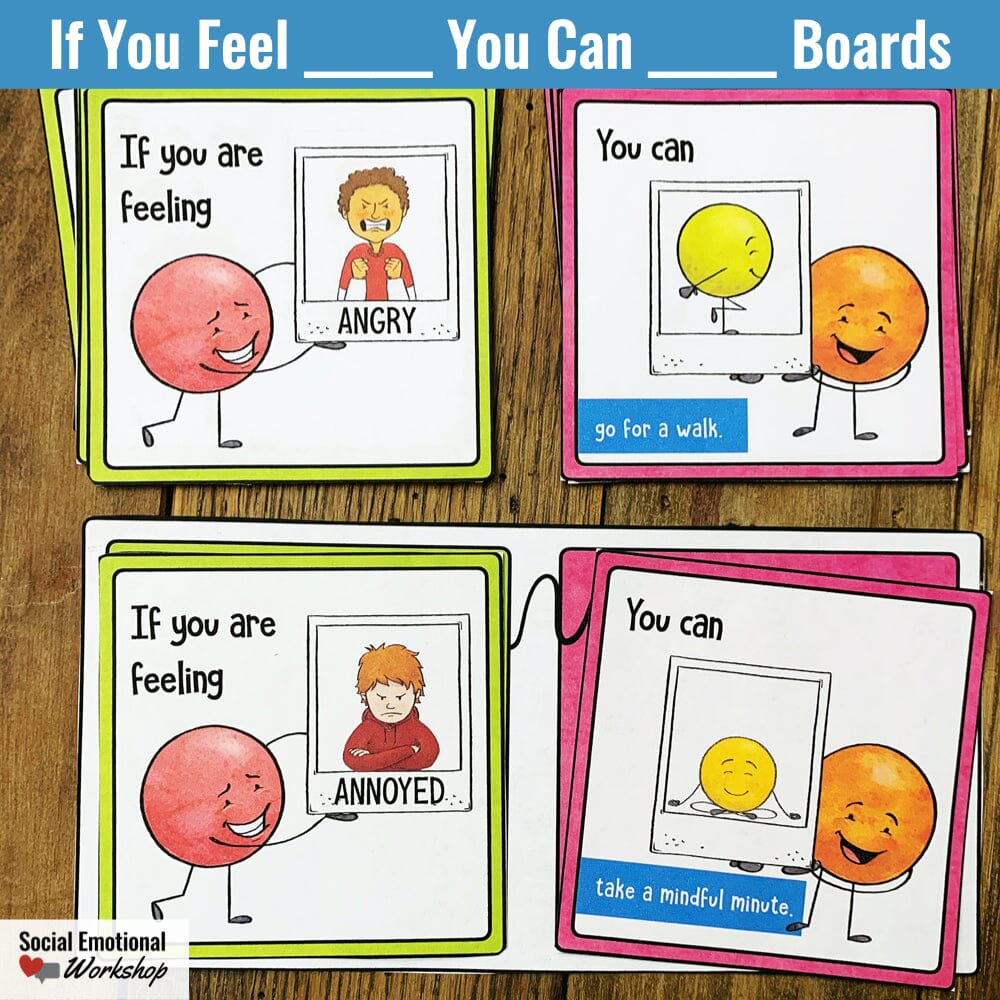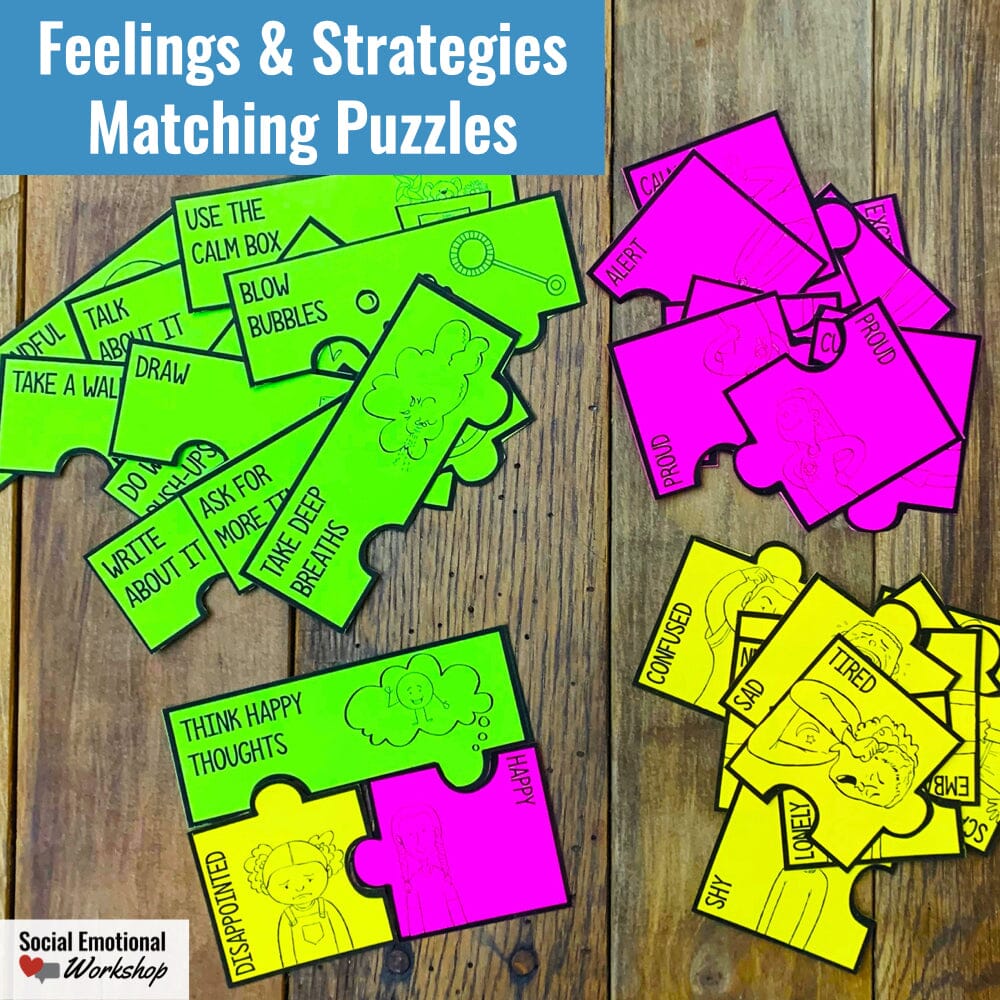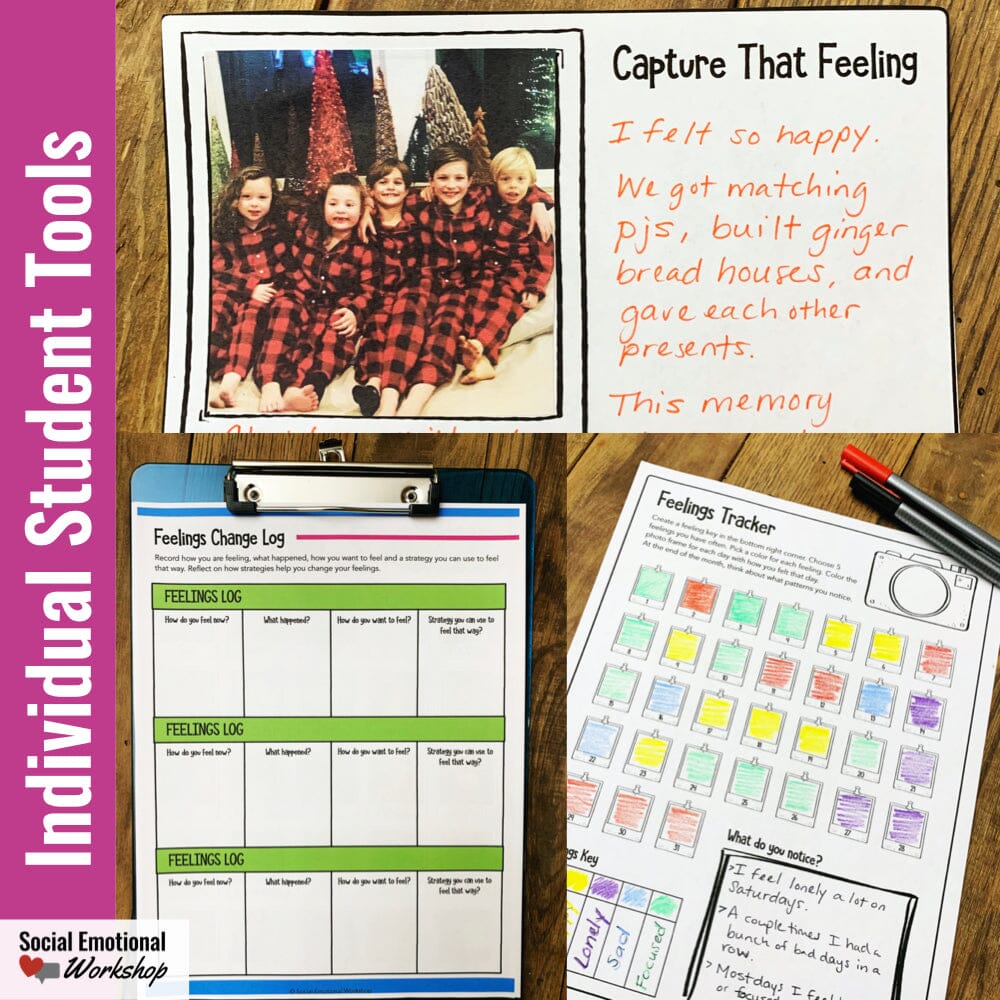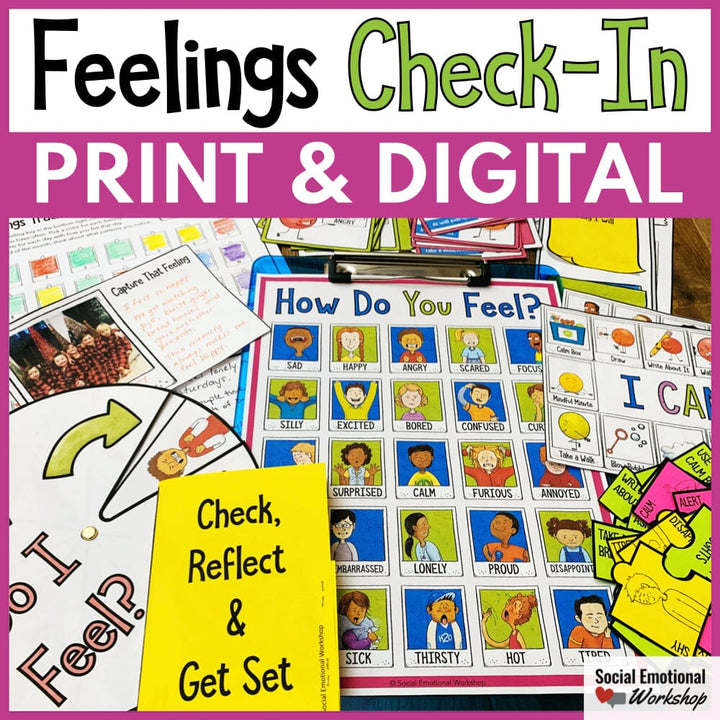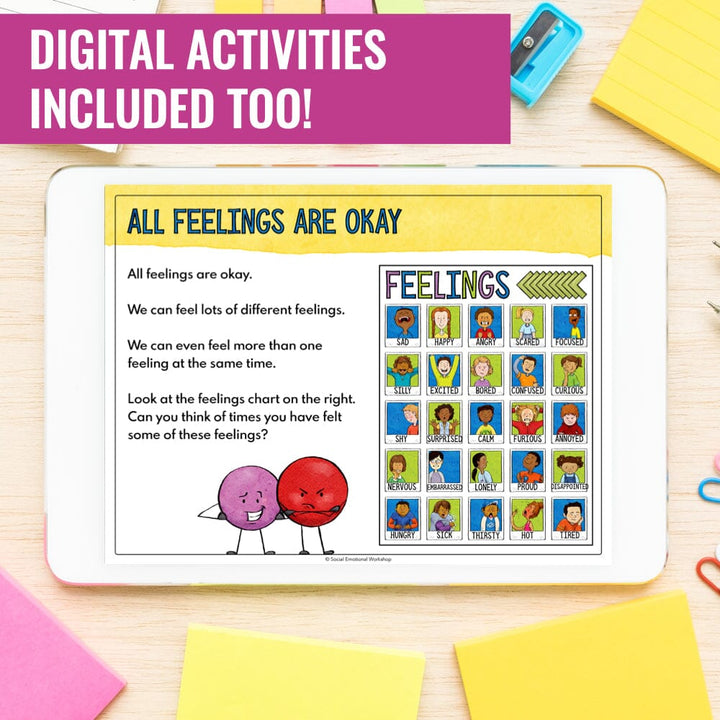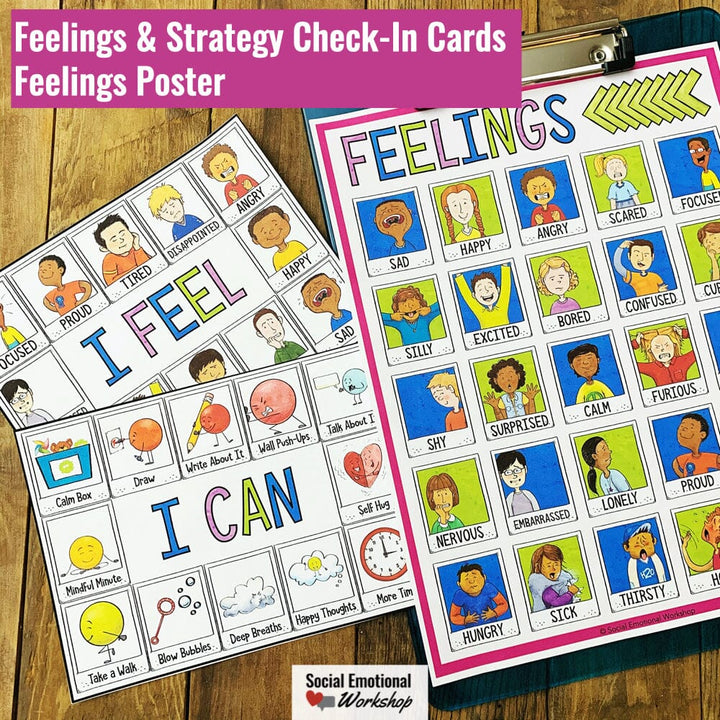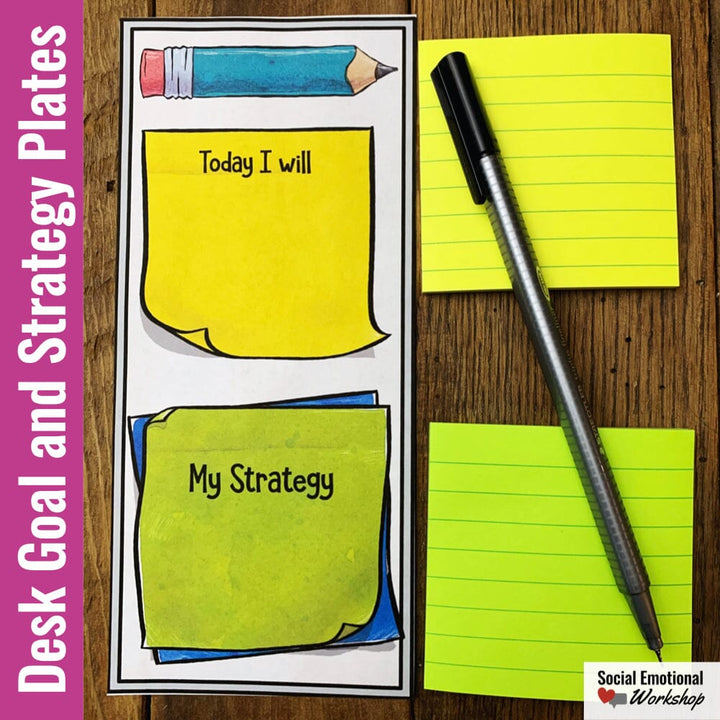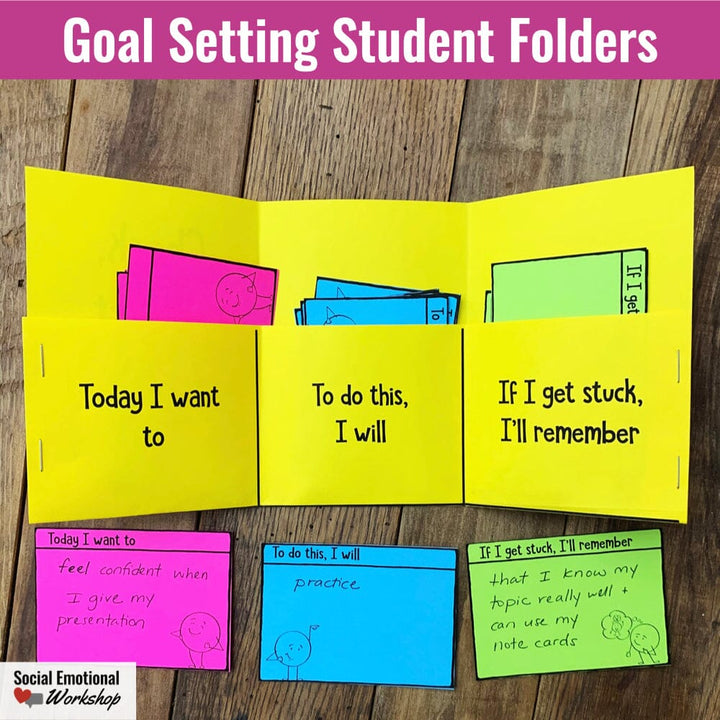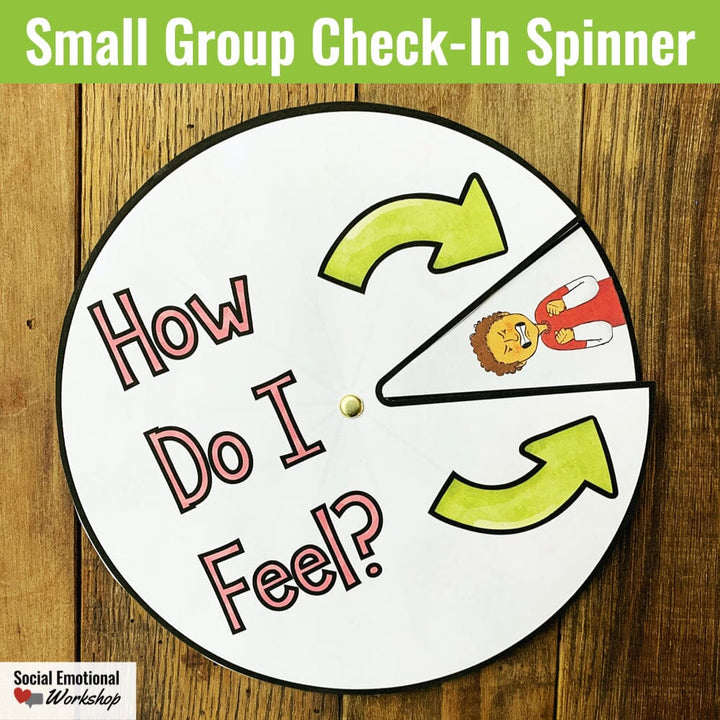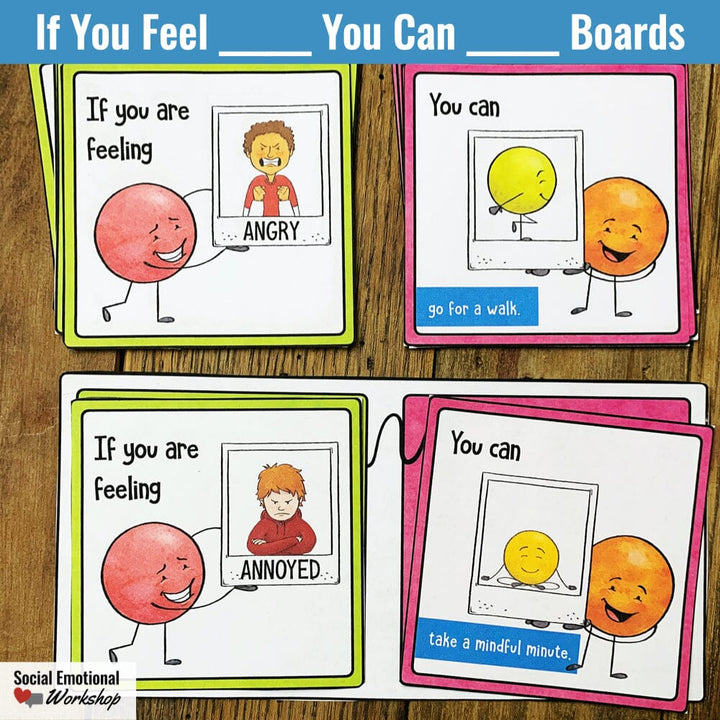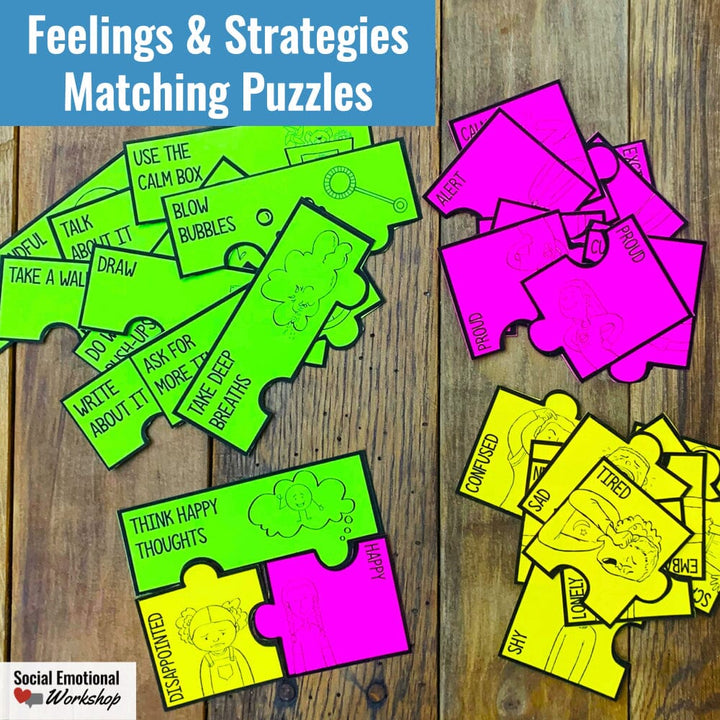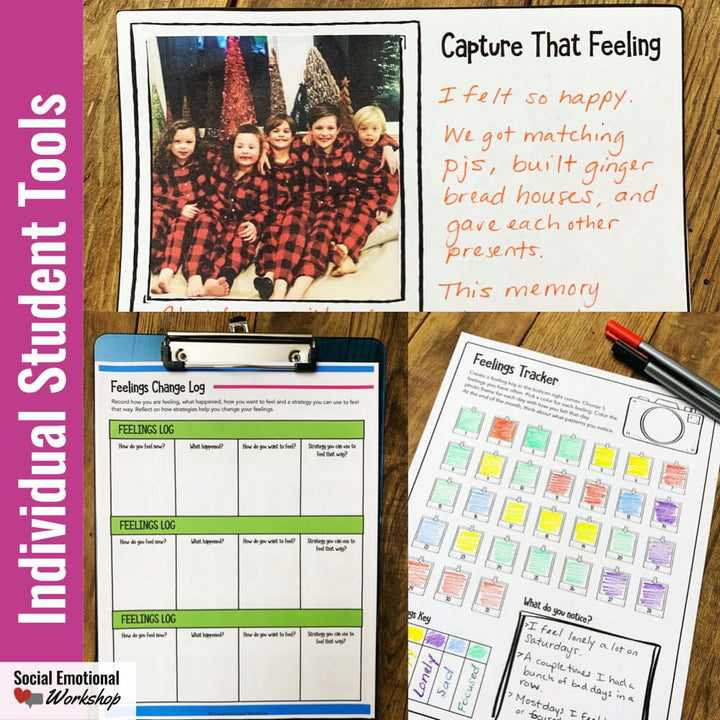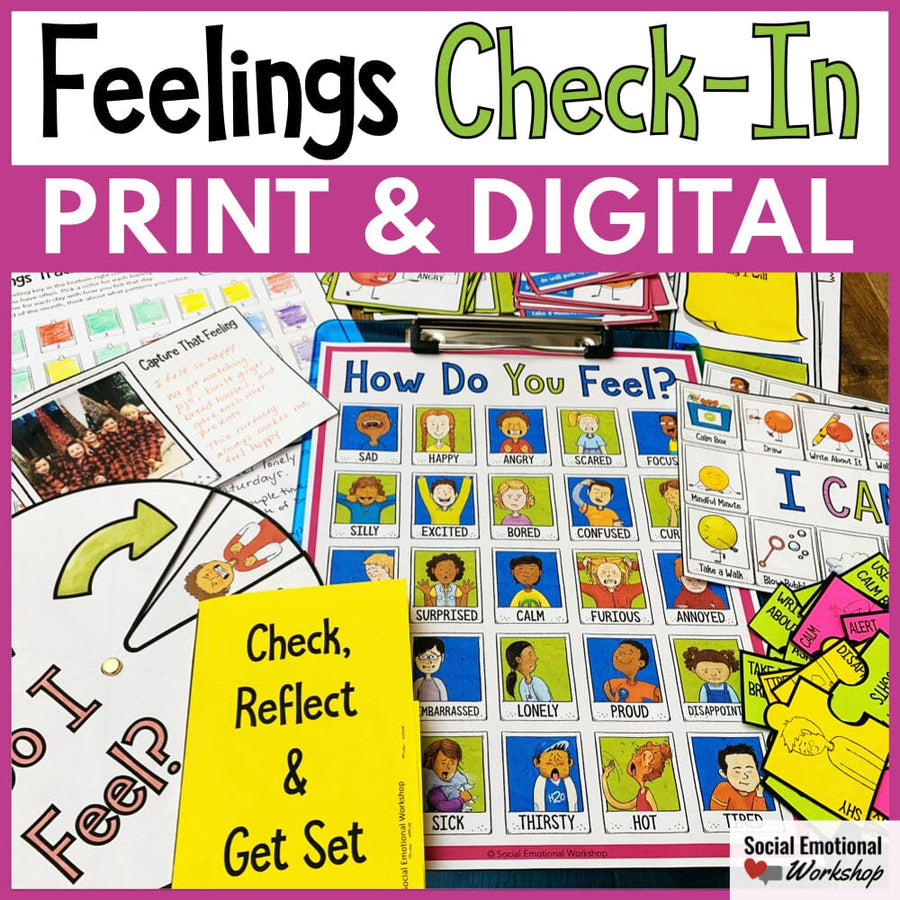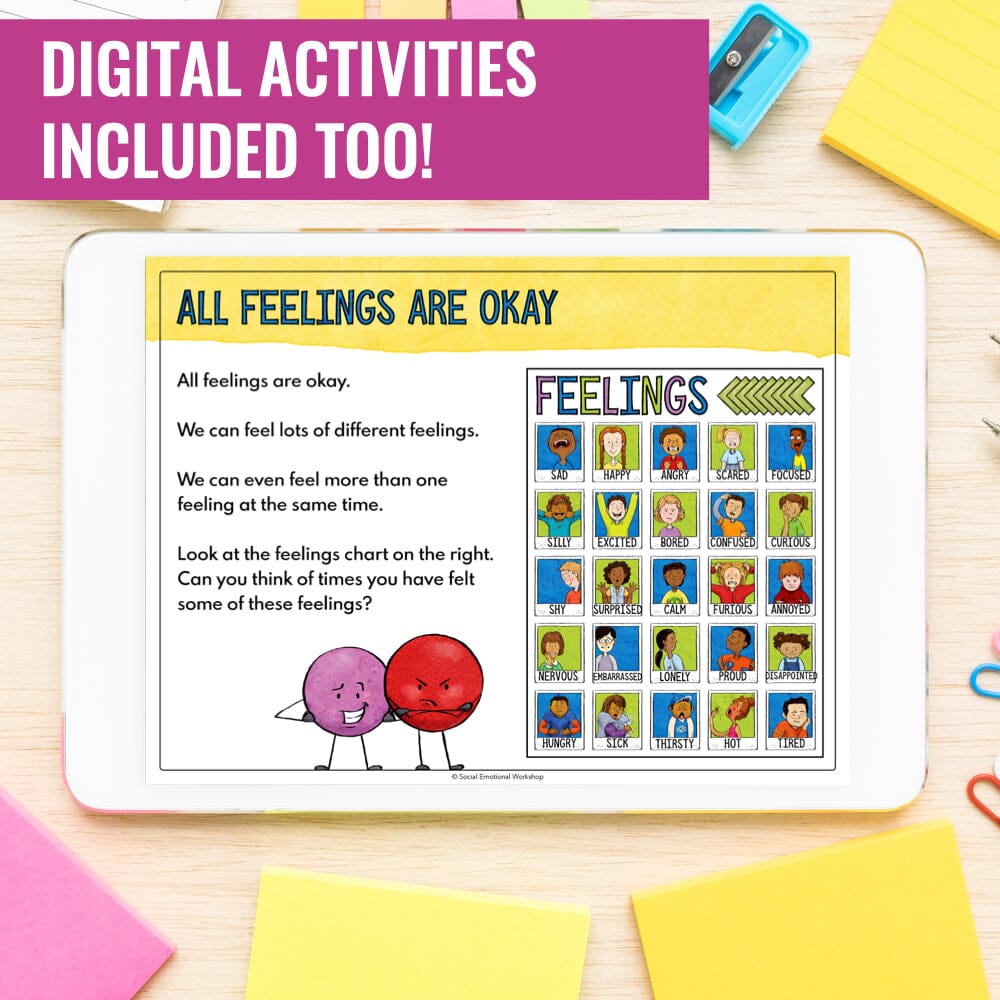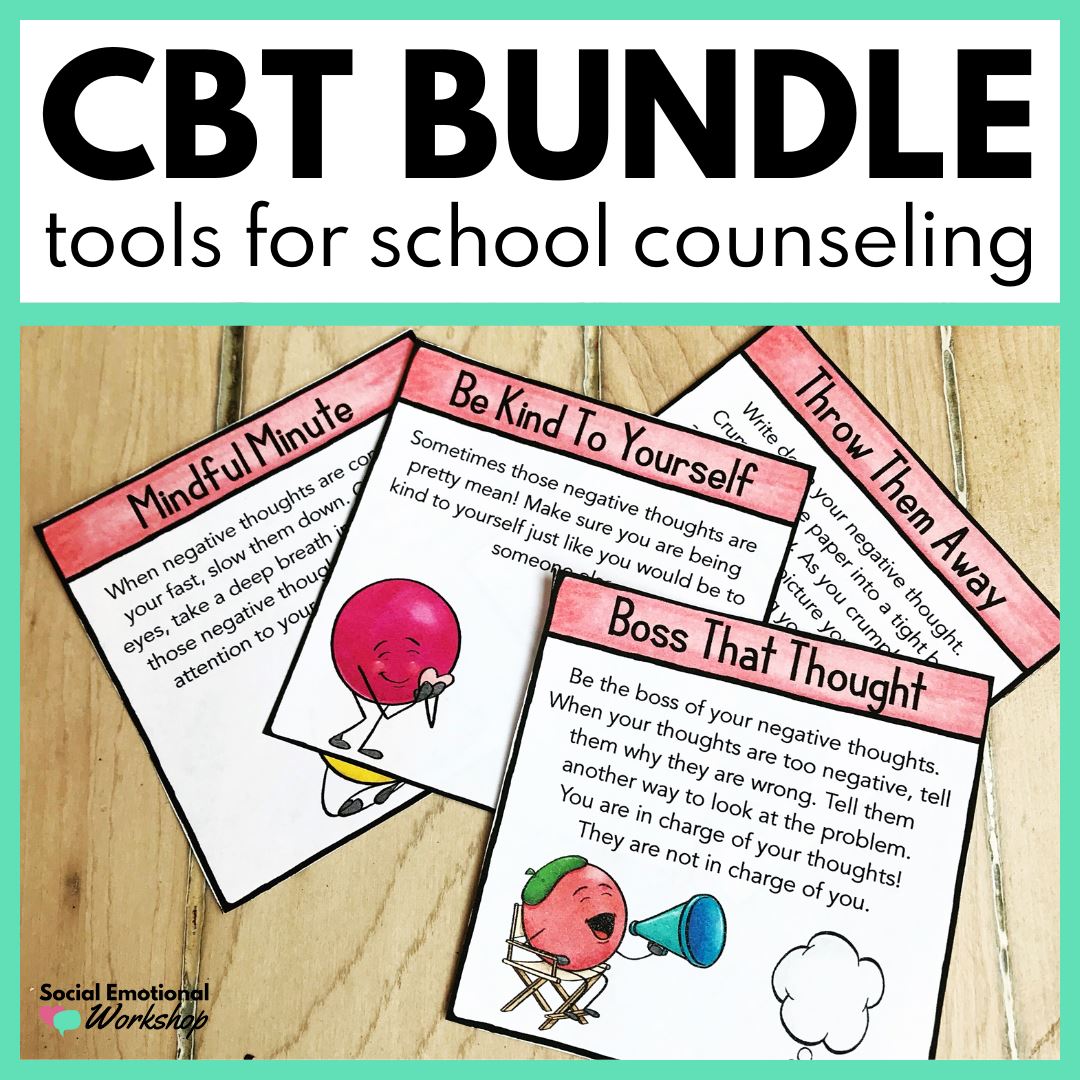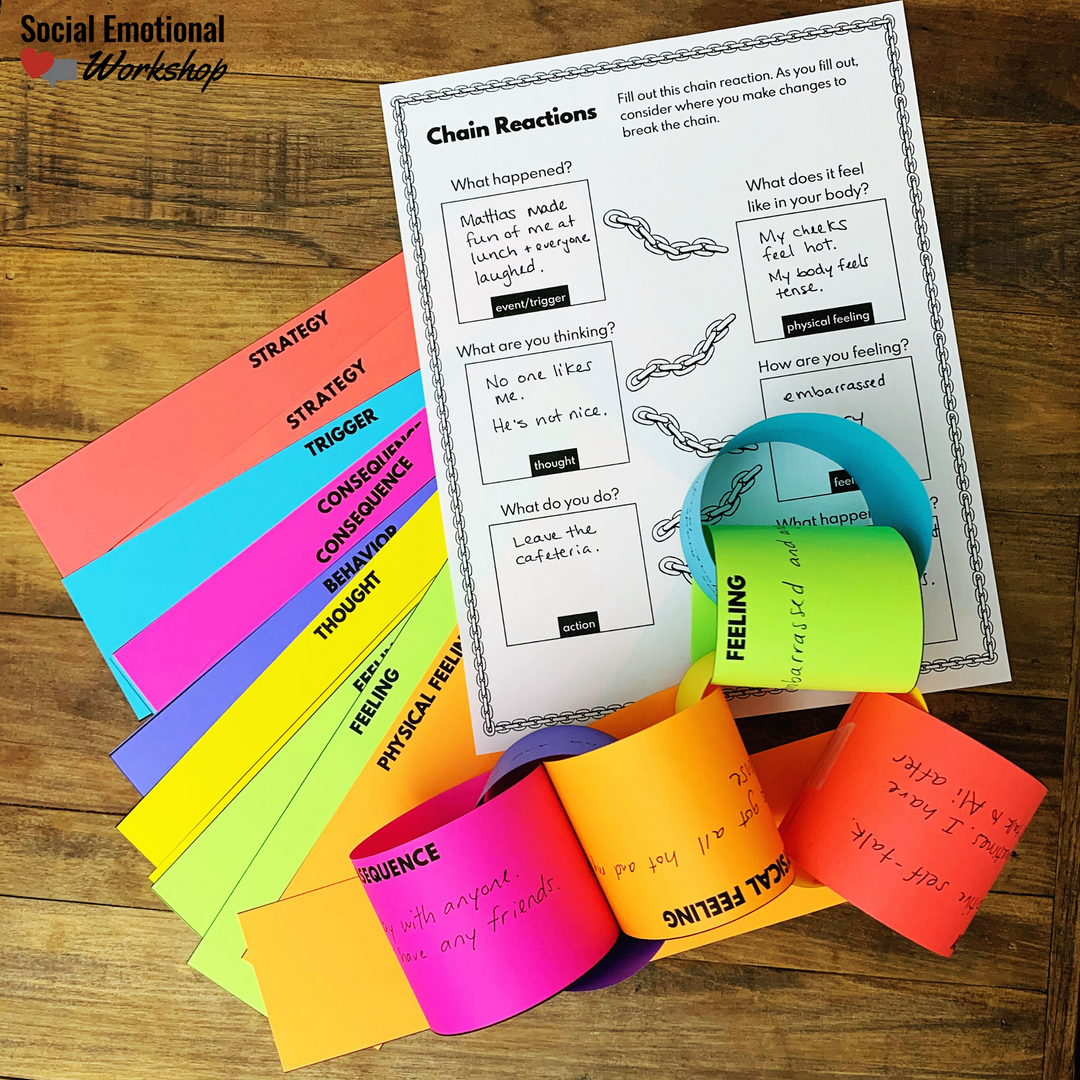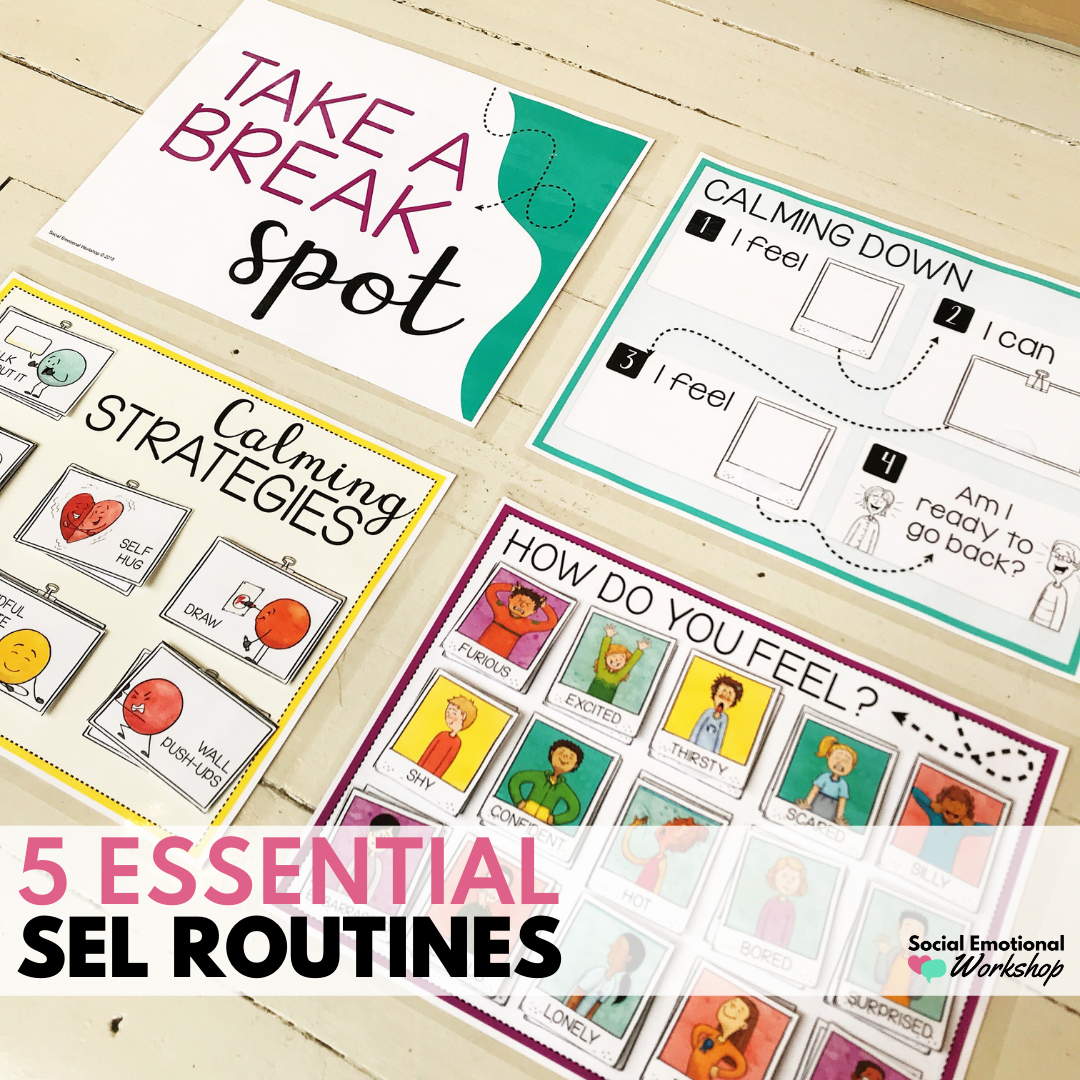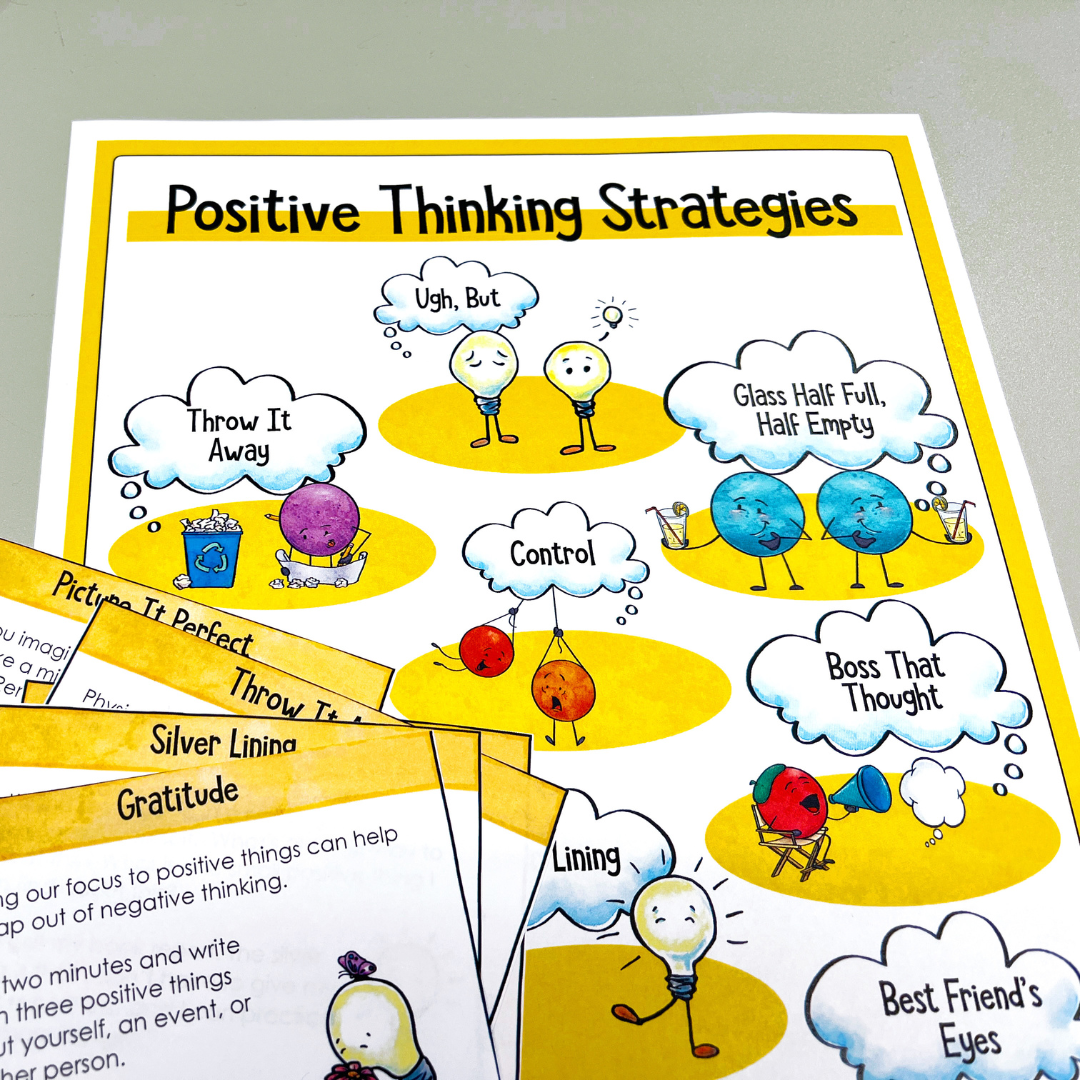Buy the Bundle & Save
About
Learning to identify your feelings is one of the first social emotional skills students learn. Naming how you feel can become a natural and simple routine built into the beginning of the school day or a counseling session.
BONUS #distancelearning Google Slides (TM) version now included!
These Feelings Check-In tools and activities let students practice recognizing their emotions and determining how to manage those feelings in the classroom. The visuals are also great for students who are not as expressive or struggle to identify the exact emotion they are feeling.
This resource is packed with materials for identifying feelings and emotions, finding effective coping strategies, and setting goals.
What You Get
- Digital Student Activities: most of the printables have been made into digital activities for students to use on tablets, computers or phones.
- Feelings Check-In Cards
- I Can Strategy Cards
- Feelings Chart
- My Feelings Photo Worksheet
- Small Group Check-In Feelings Spinner
- Matching Coping Strategies to Feelings Activities
- Matching Feelings and Strategies Puzzles *
- If This, Then That Board
- If You Feel Cards
- You Can Cards
-
Strategy Desk Plates to Set Goals and Identify Strategies
-
Check, Reflect, & Get Set Activity *
- Students Mini-Trifolds
- Goal Cards
- Strategy Cards
- Don’t Get Stuck Cards
-
Individual Student Resources
- Feelings Check-In Boxes
- Feelings Check-In Logs
- Feelings Tracker or Mood Tracker *
- Capture The Feeling - Positive Memory Coping Strategy *
* Materials only in BW where noted, otherwise available in BW and color.
Details
This resource is perfect for teachers and school counselors incorporating social emotional learning and emotional awareness.
Why Bother?
The first Social Emotional Learning (SEL) competency is self-awareness and it starts with students being able to identify how they feel. A daily feelings check-in helps students learn to recognize different emotions and also the intensity of emotions. We can't manage a feeling if we can't name it.
It normalizes feelings. We aren't always supposed to be happy or calm. Sometimes we are sad or jealous or angry. When we do daily feelings check-ins, we recognize that all feelings are okay. It then opens up the conversation that how we handle those feelings makes all the difference.
Feelings check-ins communicate that how everyone feels is important. And that as part of a community, someone is going to care how you feel. It's such a simple daily task to do that shows someone wants to listen and help.
Details
Made For
Small Groups, Individual Counseling, and The Classroom
Topics
Feelings and Self Regulation
Grades
3, 4, and 5
File Types
PDF and Google Slides
Pages
80+
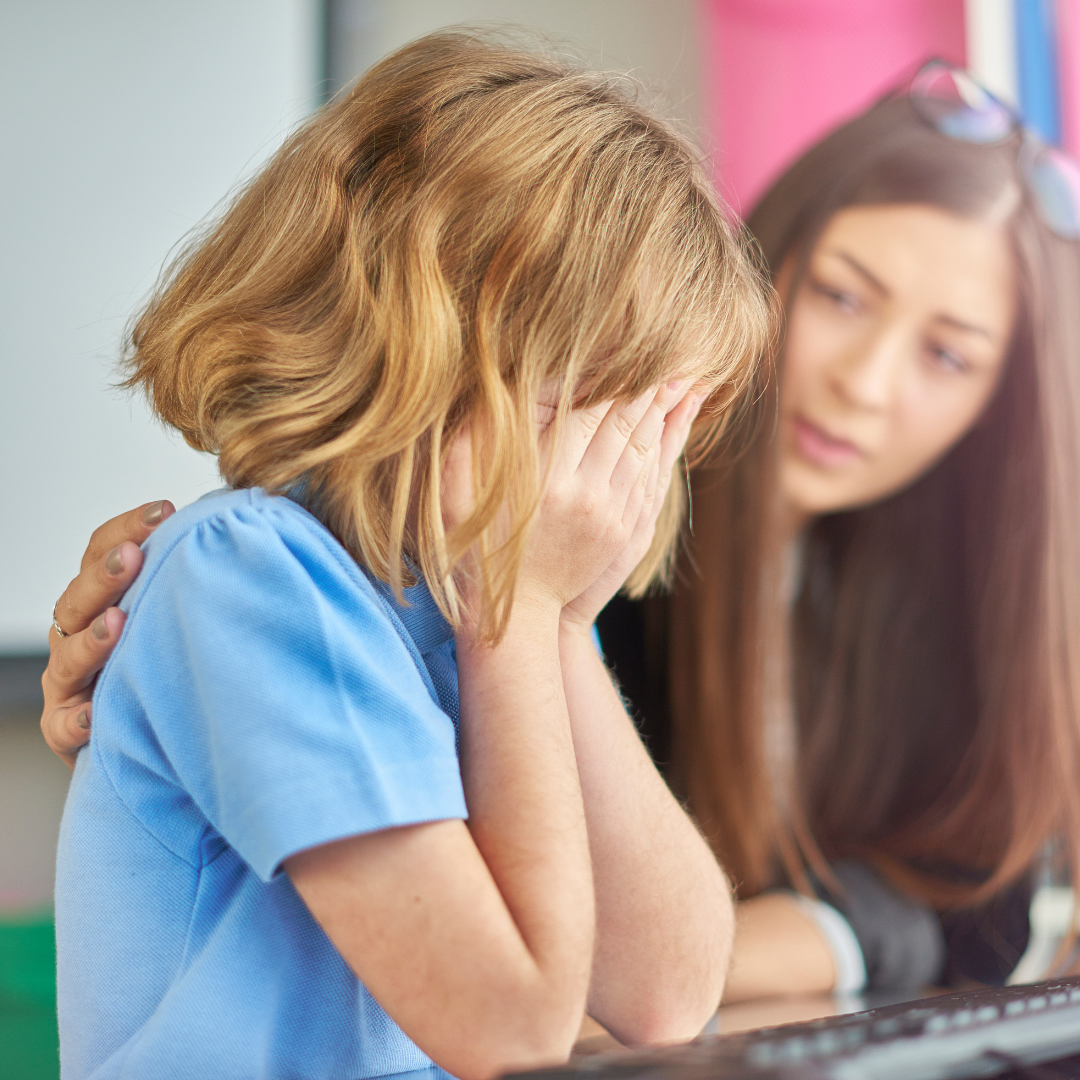
10 Ways School Counselors Can Help Anxious Students





